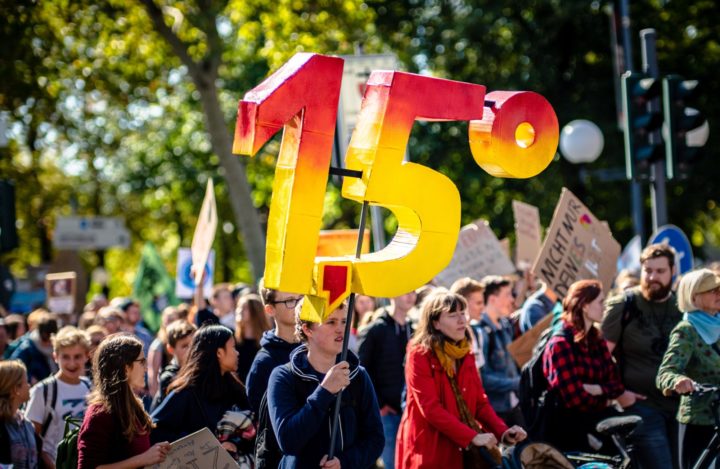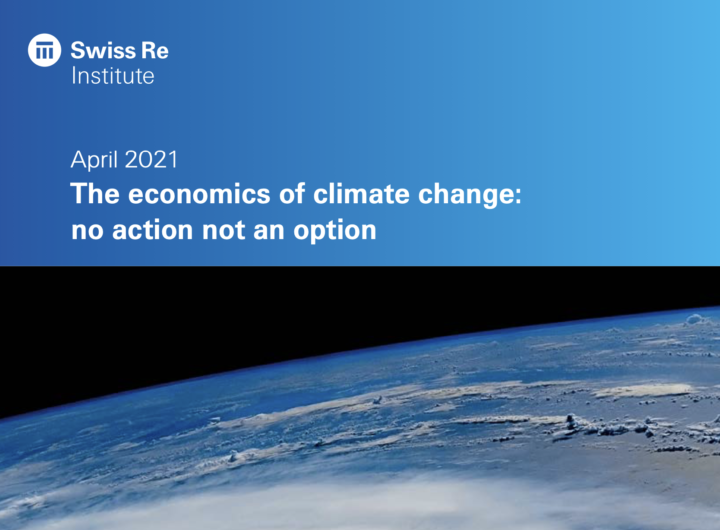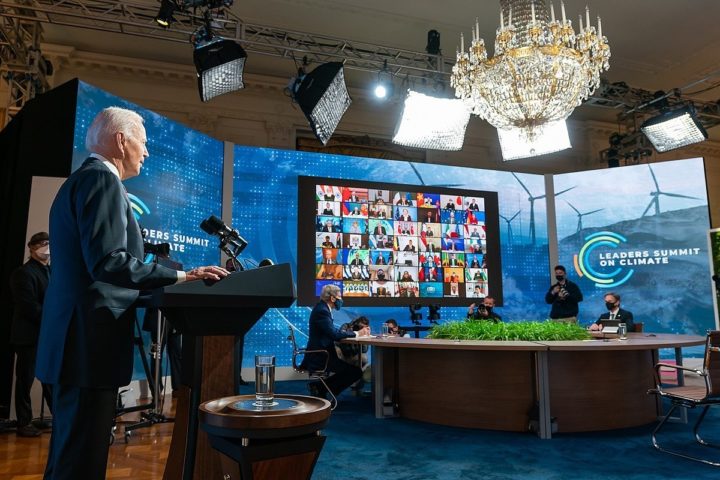The Glasgow Climate Summit & Finance
What is climate finance & why is it so important for this year's climate summit, COP26?

By Gareth Redmond-King
@gredmond76Share
Last updated:
‘Climate finance’ refers to funding from rich countries to poorer ones to cut carbon, adapt to climate change, and pay for loss and damage from climate impacts. This is a key deliverable for COP26.
Over a decade ago, wealthy nations promised that, by 2020, they would provide $100 billion a year in support to poorer ones; mid-way through 2021 this has not been delivered in full.
In April, COP26 President-Designate, Alok Sharma set out four priorities for the UK Presidency. The first two – decarbonising to keep 1.5°C within reach and adapting to protect communities and habitats – can only be delivered if developed countries provide the promised $100 billion.
Why is finance important for COP26?
Global climate negotiations under the United Nations Framework Convention on Climate Change (UNFCCC) have long recognised differential impacts and costs for rich and poor nations in the principle of ‘common but differentiated responsibilities'.
All nations have a shared obligation to tackle climate change, but the responsibility falls more heavily on wealthy, developed countries whose economies were built on fossil-fuelled development since the industrial revolution. This also applies to how the world pays for climate action: in effect, the historic polluter pays.
Funding from richer countries is therefore crucial to ensuring that everyone can cut emissions to keep the Paris aim of keeping warming to 1.5°C within reach.
But delivery on a promise made by one group of nations to another is critical to trust in the UN negotiations and process, as the UN Secretary General recently acknowledged. If trust is eroded, then negotiation and agreement become harder on any of the issues on the COP agenda.
This year’s COP, though, should begin negotiations on raising the level of climate finance beyond $100bn a year, from 2025 onwards. There are concerns that it will be more difficult to progress if the existing commitment has not been delivered.

As well as ramping up to meet the $100bn, donors are asked to give a larger proportion (half, up from the current 20%) towards adaptation, particularly to least-developed countries and small-island developing states.
Additionally, the UN’s own panel of experts have called for greater transparency, to enable proper accounting and accountability by donors, to the UN and to UNFCCC parties.
A growing proportion of climate finance also comes from multi-lateral development banks (MDBs) who, along with the IMF and World Bank, are under growing pressure to move their funds away from fossil fuels, and towards green recovery.
Costs and benefits
Putting a price on climate action to deliver the Paris Agreement goals of keeping global temperature rise to 1.5°C – or at least well-below 2°C – is not straightforward.
The Organisation for Economic Co-operation and Development (OECD) puts the cost of achieving the UN’s Sustainable Development Goals, in a way compatible with Paris, at $6.9 trillion a year, to 2030. A 2019 World Bank estimate suggests the necessary global infrastructure investment would cost $90 trillion by 2030.
However, the same study also found that the investment will be repaid four times over, whilst a 2018 New Climate Economy analysis suggests bold climate action would, on a conservative estimate, yield a direct economic gain of $26 trillion over ‘business as usual’ by 2030.
In the UK, where the Climate Change Committee estimates that delivering net-zero will cost 1% of UK GDP, a 2020 Vivid Economics study calculates that the investment would deliver £90bn a year in economic co-benefits (equivalent to 4.5% of 2019 GDP).

Additionally, it has been clear since Nicholas Stern’s landmark 2006 review of the economics of climate change that the costs of not acting are much higher, and estimates have only grown since.
Re-insurance giant, SwissRe, calculated recently that the global economy could be 7-10% smaller in 2050 than now as a result of the cost of climate impacts. This is based on current global emissions pledges – so if the world warms by between 2°C and 2.6°C – as against a world where we meet the goals of the Paris Agreement. That is a level of economic harm greater than both the covid pandemic and the 1920s Great Depression.
Unfair distribution
Global costs do not fall evenly or proportionate to wealth. Many climate impacts – rising sea levels, extreme weather events, droughts – affect the poorest parts of the world most. The World Bank estimates natural disasters cost $18bn a year in low and middle-income countries, with further costs to households and businesses totalling $390bn a year.
The UN Environment Programme calculates adaptation costs in developing countries to be $70bn, and predict they will rise to anything from $140bn to $300bn by 2030 – an increase of at least 50%
Whilst bearing the costs of those impacts, affected nations must also invest to adapt to future impacts, cut emissions, and drive sustainable economic growth. Compounding this, poorer nations find it harder and more costly to access financing for infrastructure, and covid-19 has added new pressures and costs.
Climate finance
Climate finance is the flow of funding from wealthy and developed, to poorer and developing nations, for climate mitigation, and adaptation. The UNFCCC and Paris Agreement require this, as well as requiring developed countries to take the lead in mobilising climate finance from other sources (e.g. private corporates, and multi-lateral development banks), and that funding is balanced between mitigation and adaptation. Some argue this should also take more account of costs incurred through loss and damage from climate impacts.
The UNFCCC disburses climate finance through the Global Environment Facility and the Green Climate Fund
$100 billion a year
At the 2010 COP, a commitment made in Copenhagen in 2009 was formalised – that developed countries would provide $100bn a year in climate finance by 2020 to support developing countries’ climate action. The 2015 Paris Agreement also committed that a future COP, before 2025, would agree a higher goal.
An independent expert group made an assessment in December 2020 on 2018 climate finance levels and found that, although on an upward trajectory, levels fell short of the $100bn. The Organisation for Economic Development and Co-operation (OECD) estimate they reached $79 billion.
Debt
A recent study by Oxfam found that a high proportion of climate finance in 2018 came in the form of loans. This put the net financial value of finance from donors not just well below $100bn, but even lower than reported – maybe by as much as half.
Poorer nations, already struggling with access to finance and servicing debt, have had these effects compounded by the economic impacts of covid-19.
The G20 group of richest countries has offered 73 of the poorest nations the ability to suspend (although not cancel) debt obligations under the debt service suspension initiative (DSSI), through to December 2021.
Additionally, the International Monetary Fund (IMF) is seeking to allocate $650bn in special drawing rights (SDRs) – these are foreign reserve credits exchangeable, by holders, for currencies of other IMF members - to help poorer nations; there have also been calls for richer nations voluntarily to reallocate theirSDRs.
G7 state of play
As of May 2021 – before the G7 summit in Cornwall – only two G7 nations had committed to raising their climate finance towards delivery of the $100bn.
The UK has doubled its climate finance to £11.6bn over five years ($16.4bn in total; just under $3.3bn a year). However, it also recently cut overseas development aid (ODA) from 0.7% of UK’s GDP to 0.5%, meaning it is paring back funding to poorer nations, as it urges others to give more.

The US has committed to doubling climate finance from its 2016 level – amounting to $5.7bn a year over the five year period. Whilst a considerable advance, it has been criticised as ‘not particularly ambitious’ and there remains pressure on the US to commit more ahead of COP26.
This is because the US, largely absent from the UNFCCC for four years, contributed nothing during that time. They have fallen behind other donors, and arguably therefore have some catching up to do before they are keeping pace with their fair share of contributions.
Germany had been expected to announce an increase at the Petersberg Climate Dialogues. However, Chancellor Merkel declined to, reminding that Germany already contributes €4.3bn ($5.2bn) annually. Subsequently, after the G7 summit, Merkel indicated that Germany would seek to raise its commitment to €6bn a year by 2025 at the latest.
Also at the G7 summit new commitments were made by Canada (to double their contribution to $5.3bn through to 2025) and Japan (to extend ¥6.5 trillion over the next five years, and improve its quality). France and Italy reaffirmed existing commitments.
G20 environment Ministers, meeting in July, reaffirmed developed country members’ commitments to the $100bn a year goal, without making any specific new pledges to close the gap.
Glossary
Climate mitigation
Action taken to cut emissions to slow, and eventually stop, warming caused by greenhouse gas emissions. For example, generating electricity from wind or solar power rather than fossil fuels, transitioning to electric vehicles rather than petrol/diesel ones, and stopping deforestation which removes trees and related natural systems that can absorb emissions.
Climate adaptation
Action to make changes to infrastructure, and ways that we live and work, to cope better with current and future climate impacts. For example, building coastal defences against rising sea levels or coastal erosion, developing better early warning systems for more frequent extreme weather, or diversifying to more drought-resistant crops.
Least-developed countries
This is a UN definition for nations which show the lowest indicators of socio-economic development. They have high indicators of poverty, low levels of social provision (health, education, welfare etc), and are vulnerable to economic and environmental shock. Examples include: Bangladesh, Eritrea, Kiribati, Nepal, and Haiti.
Small island developing states
A group of developing countries that are also islands, that share similar barriers to sustainable development – such as being remote, having small populations and being vulnerable to economic and environmental shocks. Examples include: Barbados, Saint Lucia, Fiji, Vanuatu, and the Maldives.
Share